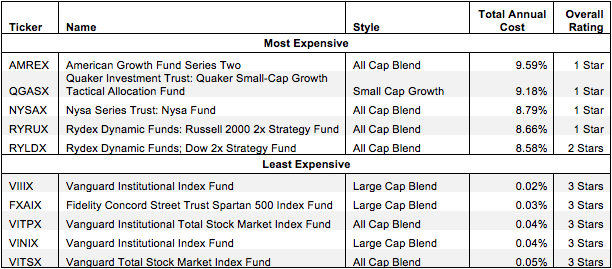Picking from the multitude of style mutual funds is a daunting task. In any given style there may be as many as 942 different mutual funds, and there are at least 6,095 mutual funds across all styles.
Why are there so many mutual funds? The answer is because mutual fund providers are making lots of money selling them. The number of mutual funds has little to do with serving investors’ best interests. Below are three red flags investors can use to avoid the worst mutual funds:
- Inadequate liquidity
- High fees
- Poor quality holdings
I address these red flags in order of difficulty. More details on the best & worst mutual funds by style are here.
How To Avoid Mutual Funds with Inadequate Liquidity
This is the easiest issue to avoid, and my advice is simple. Avoid all mutual funds with less than $100 million in assets. Low asset levels tend to mean lower volume in the mutual fund and larger bid-ask spreads.
How To Avoid High Fees
Mutual funds should be cheap, but not all of them are.
To ensure you are paying at or below average fees, invest only in mutual funds with total annual costs (TAC) below 2.05%, which is the average TAC of the 6,095 U.S. equity style mutual funds I cover. If you weight the TACs by assets under management, then the average TAC is lower at 1.38%. A lower weighted average is a good sign that investors are putting money in the cheaper mutual funds.
Figure 1 shows the most and least expensive style mutual funds in the U.S. equity universe based on total annual costs. Rydex provides two of the most expensive style funds, while Vanguard provides four of the five cheapest Mutual Funds.
Figure 1: 5 Least and Most Expensive Style Mutual Funds

Sources: New Constructs, LLC and company filings
While costs among ETFs fall into a generally narrow range, mutual fund costs are more varied. The high costs of the most expensive mutual funds, sometimes above 9% annually, make it much harder for them to perform as well as the cheapest mutual funds.Sources: New Constructs, LLC and company filings

